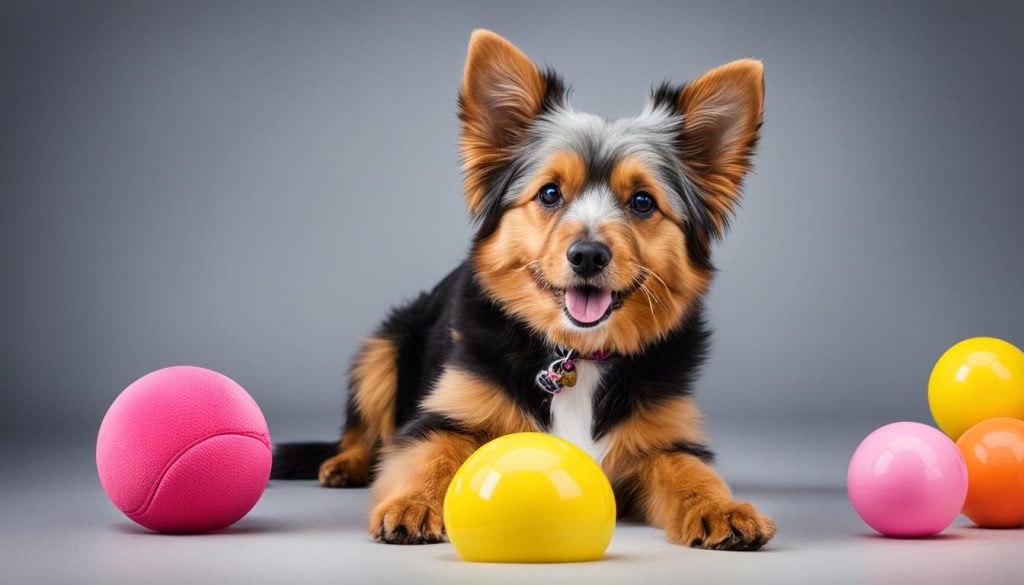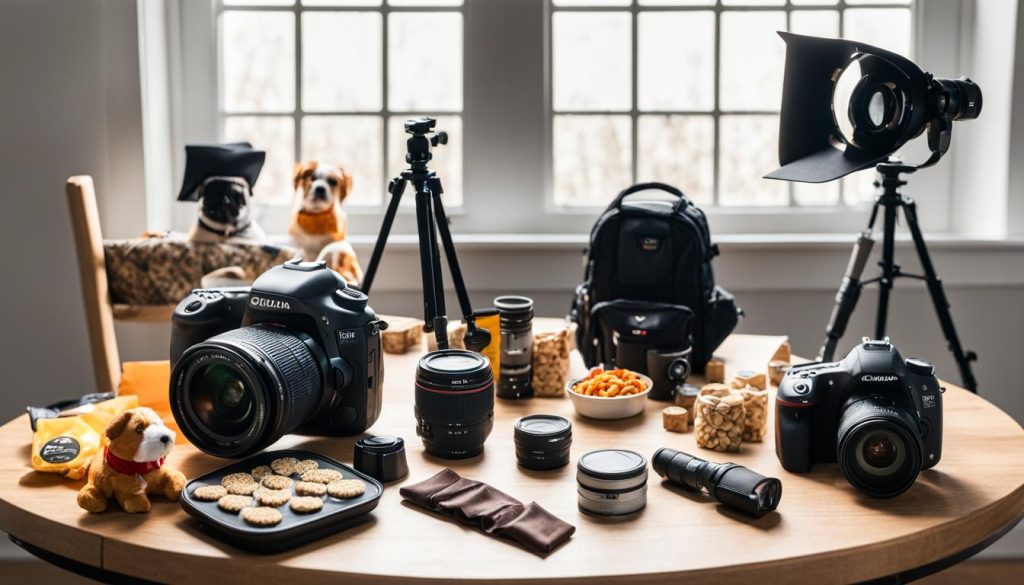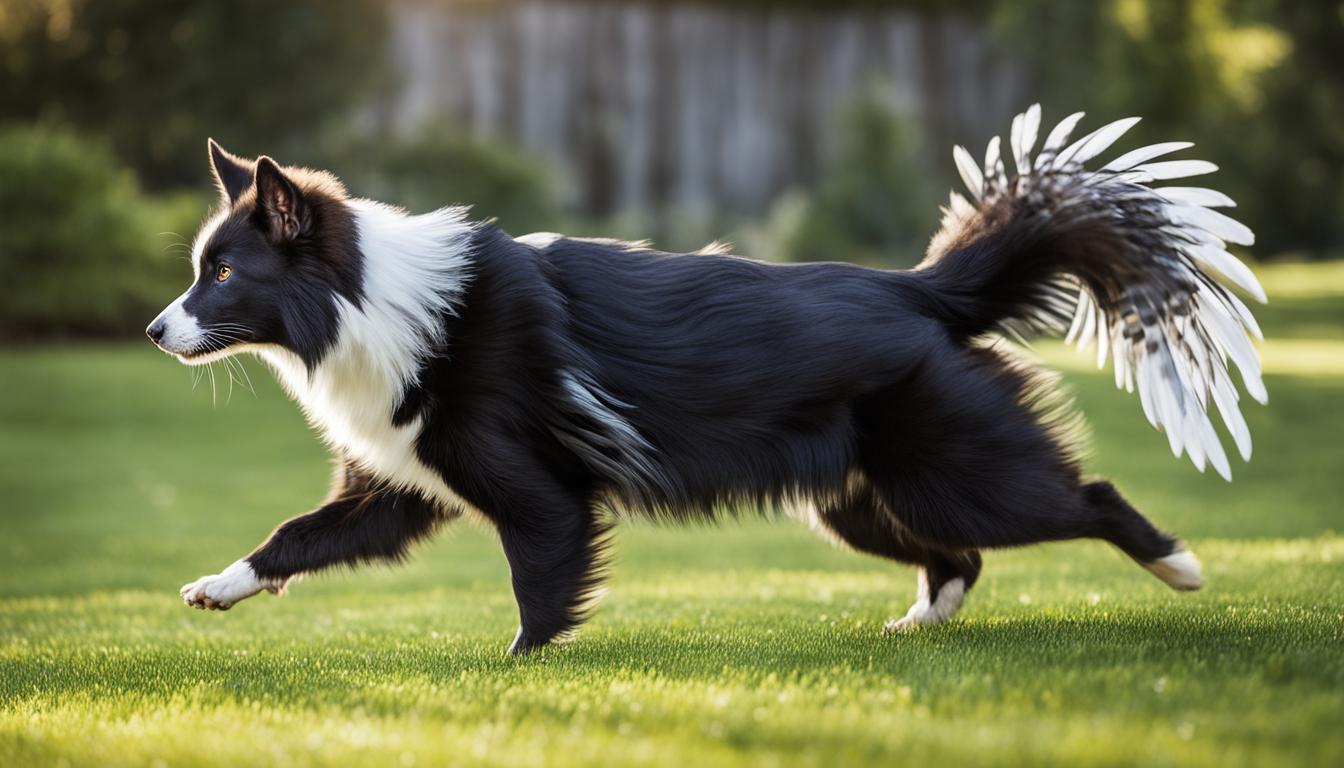Welcome to our comprehensive guide on photographing domestic animals. Whether you’re an aspiring pet photographer or simply want to capture better pictures of your furry companions, this guide is here to help. We understand the joy and satisfaction that comes from capturing special moments with our beloved pets, and we want to equip you with the knowledge and tips to create stunning pet photographs.
Photographing animals, particularly domestic pets, can be a delightful yet challenging endeavor. Unlike human subjects, our four-legged friends don’t always follow directions or pose on command. But fear not! With the right techniques and approach, you can capture memorable images that showcase the unique personalities of your pets.
Keep in mind that pet photography isn’t just about personal satisfaction. In today’s digital age, sharing pet photos on social media has become immensely popular. Whether it’s the adorable face of your puppy or the graceful movements of your cat, pet photos have the power to brighten up our day and connect us with fellow animal lovers.
So, let us guide you through the process of photographing domestic animals and help you enhance your pet photography skills. From natural lighting techniques and capturing the mood of your pets to essential gear recommendations and camera settings, we’ve got you covered.
Key Takeaways:
- Photographing domestic animals presents unique challenges but can be incredibly rewarding.
- Sharing pet photos on social media is a popular way to connect with other animal lovers.
- Understanding natural lighting techniques is crucial for capturing stunning pet photographs.
- Capturing the mood and personality of your pet adds depth and storytelling to your images.
- Technical aspects such as shutter speed and focus play a vital role in pet photography.
Natural Lighting Techniques for Pet Photography
In the world of pet photography, using natural light as a source of illumination can make a significant difference in capturing stunning and authentic images of your furry friends. Unlike artificial lighting, natural light creates a soft and flattering effect that enhances the beauty of your pet’s features. By utilizing outdoor settings and optimizing your indoor spaces, you can create striking pet portraits that truly showcase their personality.
When photographing pets outdoors, it is crucial to make the most of natural light conditions. Avoid using flash and studio strobes as they can startle animals and cause unnatural shadows. Instead, opt for the gentle and even lighting provided by the sun. Consider shooting under a shady tree or during the magical moments of sunrise or sunset for a warm, soft glow in your outdoor pet portraits.
It’s essential to position yourself with the sun at your back to avoid harsh shadows on your pet’s face. This technique ensures that your pet is evenly and beautifully lit, highlighting their natural charm. By taking advantage of natural light, you can capture the vibrant colors of your pet’s coat, the sparkle in their eyes, and their captivating expressions.
Indoor Pet Photography
Indoor pet photography also benefits from natural light. When shooting indoors, choose a room with large windows that allow ample sunlight to fill the space. Look for areas with white walls and floors as they help reflect light, creating a softer and more flattering ambiance. These well-lit rooms can provide a beautiful backdrop for your pet’s portrait, evoking a sense of warmth and coziness.
Whether you’re capturing outdoor adventures or cozy indoor moments, remember that natural light can be a powerful tool in pet photography. It lends a natural and timeless quality to your images, enhancing the overall aesthetics and creating a greater connection between your furry friend and the viewer.
Capturing the Mood and Personality of Your Pet
When it comes to pet photography, capturing the unique personality and mood of your furry friend is key. These precious moments not only showcase your pet’s individuality but also help bring their story to life through visual storytelling. In this section, we will explore different strategies and ideas for capturing the essence of your pet in photographs.
Planning a Photoshoot That Reflects Your Pet’s Character
Before embarking on a pet photoshoot, take some time to brainstorm pet photoshoot ideas that align with your pet’s character. Consider incorporating their favorite toys, accessories, or even outfits that highlight their interests or personalities. By incorporating these elements, you can create a captivating visual narrative that defines who your pet truly is.
“Pets are filled with unique qualities and quirks that make them special. As a pet photographer, it’s all about capturing those candid moments where their personality shines through.”
Take inspiration from your pet’s everyday activities. If they love playing fetch, consider a photoshoot that captures their joy and energy during a play session. If your pet is more laid-back, a peaceful and serene setting may be ideal to showcase their calm nature. Remember, the key is to build a photoshoot that encapsulates their traits and tells a story through imagery.
Exploring Different Types of Pet Shots
When photographing pets, it’s important to explore a variety of shots that can capture different aspects of their personality. Static portraits can beautifully showcase your pet’s unique features and expressions, while action shots can capture their energetic and playful nature.
“Different types of shots can help to convey various emotions and personalities. By mixing static portraits and action shots, you can capture a more comprehensive and vibrant representation of your pet.”
Consider the moment you want to freeze in time. Is it your cat adorably staring into the distance or your dog leaping through the air to catch a frisbee? Each shot type can provide a different perspective and help you tell a compelling story through your photographs.
Considering Your Pet’s Energy Level
When scheduling a pet photoshoot, consider your pet’s energy level. Some pets are more active and thrive in high-energy environments, while others prefer a calm and quiet setting. By understanding your pet’s energy level, you can ensure that you capture their true essence in photographs.
“To capture the essence of your pet’s true character, it’s essential to create an environment where they feel comfortable and at ease.”
If your pet is full of energy, plan a photoshoot that allows them to engage in their favorite activities. For calmer pets, choose a serene location that reflects their demeanor. By adapting the photoshoot to their energy level, you can create a relaxed and enjoyable experience, resulting in stunning photos that capture their true personality.
Now that we’ve explored strategies for capturing the mood and personality of your pet in photographs, it’s time to dive into the technical aspects of pet photography. In the next section, we’ll discuss shutter speed and focus techniques that can take your pet photos to the next level.
“Pets are like family members, and their unique personalities deserve to be celebrated. Through thoughtful planning and creative techniques, you can create pet photos that tell their captivating stories.”

Shutter Speed and Focus Techniques for Pet Photography
When it comes to capturing those precious moments of your furry friends, having the right shutter speed and focus techniques can make all the difference. As pets are known for their unpredictable movements and expressive eyes, mastering these technical aspects will elevate your pet photography skills to the next level.
Tips for achieving high shutter speed:
- Use a DSLR or mirrorless SLR camera: These types of cameras provide more control over settings, including shutter speed.
- Opt for burst mode on smartphones: Burst mode allows you to capture a series of photos rapidly, increasing the chances of getting the perfect shot.
- Experiment with shutter speed settings: Start with a high shutter speed (1/500s or faster) to freeze your pet’s action. If the images appear too dark, gradually increase the ISO or open up the aperture to compensate for the reduced light.
Pro Tip: A high shutter speed is essential for freezing your pet’s action, whether they’re running, jumping, or playing. This not only ensures that you capture every detail but also gives your photos a dynamic and energetic feel.
Focus techniques for capturing expressive pet eyes:
- Use single focus points: Set your camera to single-point autofocus to ensure precise focusing on your pet’s eyes. This technique works particularly well when your pet’s eyes are the main focal point.
- Utilize continuous autofocus (AF-C) mode: This mode allows the camera to track your pet’s movements while continuously adjusting focus, ensuring sharp eyes in action shots.
Pro Tip: The eyes are the windows to the soul, and capturing sharp, expressive pet eyes can bring a sense of connection to your photos. Take the time to focus on your pet’s eyes and make them the star of your images.
Gear and Equipment Recommendations for Pet Photography
When it comes to pet photography, having the right gear and equipment can make all the difference in capturing those perfect pictures of your furry friends. From cameras to lenses, tripods, and teleconverters, investing in the right tools will help elevate your pet photography game to new heights. Here are some recommendations to get you started:
Cameras
When choosing a camera for pet photography, look for one with excellent autofocus capabilities and the ability to use interchangeable lenses. This will allow you to achieve sharp focus on your pet’s eyes and capture their unique expressions. Some popular camera options for pet photography include:
- Nikon D850
- Canon EOS 5D Mark IV
- Sony Alpha a7 III
Lenses
Pairing your camera with the right lens is crucial for capturing stunning pet portraits. Super-telephoto lenses are particularly useful for pet photography, as they allow you to get close-up shots without disturbing your furry subjects. Here are some lens recommendations:
- Nikon AF-S NIKKOR 200-500mm f/5.6E ED VR
- Canon EF 100-400mm f/4.5-5.6L IS II USM
- Sony FE 100-400mm f/4.5-5.6 GM OSS
Tripods
Using a tripod can help ensure stable shots, especially in low-light situations or when using longer focal lengths. Look for a sturdy tripod that can support the weight of your camera and lens combination. Some reliable tripod options include:
- Manfrotto MT055XPRO3
- Benro TMA47AXL Mach3
- Gitzo GT3543LS Systematic
Teleconverters
If you want to extend the focal length of your lens without investing in a new one, consider using a teleconverter. Teleconverters are great tools for getting even closer to your pet subjects. Make sure to choose a teleconverter that is compatible with your camera and lens. Here are some options to consider:
- Nikon AF-S Teleconverter TC-14E III
- Canon Extender EF 1.4x III
- Sony FE 1.4x Teleconverter
By selecting the right gear and equipment for your pet photography endeavors, you’ll be well-equipped to capture memorable moments of your furry companions. Remember to invest in quality gear that suits your specific needs and style of photography, and don’t be afraid to experiment and have fun!

Setting the Ideal Camera Parameters for Wildlife Photography
When photographing wildlife, it’s crucial to have the right camera settings to capture those incredible moments in the best possible way. In this section, we’ll explore the ideal camera parameters that will help you achieve stunning wildlife photographs.
Aperture Priority or Shutter Priority Mode?
Instead of relying on the auto mode, consider using aperture priority or shutter priority mode to have more control over your photos. Aperture priority mode allows you to set the desired aperture value, while the camera determines the appropriate shutter speed. Shutter priority mode, on the other hand, allows you to set the desired shutter speed, giving you control over motion capture. Both modes are great choices when it comes to wildlife photography.
Choosing the Right Aperture and ISO Settings
When capturing wildlife, it’s important to choose the appropriate aperture and ISO settings to achieve optimal results. A wider aperture, such as f/2.8 or f/4, will create a shallow depth of field, allowing you to isolate your subject and create a beautiful background blur. However, keep in mind that a wider aperture may result in less of the subject being in focus. For smaller animals, a narrower aperture, such as f/8 or higher, may be more suitable to ensure the entire subject is in focus.
As for ISO settings, a higher ISO can be beneficial in low-light conditions, allowing you to maintain a fast shutter speed. However, be cautious as higher ISO values can introduce digital noise into your images. Experiment with different ISO settings to find the right balance between a fast shutter speed and minimal noise.
Freezing Animal Motion with a Fast Shutter Speed
One of the key challenges in wildlife photography is capturing animals in motion. To freeze the action, you’ll need a fast shutter speed. Aim for a minimum shutter speed of 1/500th of a second, or even faster if the animal is moving quickly. This will help you capture crisp and sharp images, showcasing the beauty and energy of the wildlife.
Optimizing Low-Light Situations with a High ISO
Wildlife photography often involves shooting in challenging lighting conditions, such as during dawn or dusk. To compensate for limited light, consider increasing your ISO to achieve a brighter exposure. A higher ISO will enable you to maintain a fast shutter speed, ensuring that your subjects remain sharp and well-defined.
Find the Perfect Balance with Depth of Field
When photographing wildlife, striking the right balance between aperture settings and depth of field is crucial. A wider aperture creates a shallow depth of field, ideal for isolating your subject from the background and creating a stunning bokeh effect. On the other hand, a narrower aperture ensures a larger depth of field, which can be advantageous when photographing animals that are closer together or in complex environments.
Remember, wildlife photography requires practice and experimentation. Don’t be afraid to try different settings and techniques to achieve the desired results. With the right camera parameters and a bit of patience, you’ll be able to capture breathtaking wildlife photographs.
Conclusion
After reading this comprehensive guide on pet photography, you are now equipped with the knowledge and tips to capture better pictures of your beloved pets. Remember, practice and patience are key to honing your skills in pet photography. It may take time to perfect your technique, but with dedication, you can create amazing and memorable images of your furry friends.
Throughout this guide, we have discussed the importance of natural lighting, capturing the mood and personality of your pet, mastering shutter speed and focus techniques, and selecting the right gear and equipment for pet photography. By applying these tips and techniques, you will be able to capture stunning photos that truly showcase your pet’s unique character.
Whether you’re a novice or an experienced photographer, always keep in mind that the most important aspect of pet photography is the bond between you and your furry friend. Take the time to establish a comfortable and relaxed environment during the photoshoot, and let their personality shine through the lens.
So, grab your camera, get out there, and start capturing the beauty and joy of your pets. With the knowledge and skills you’ve gained from this guide, you’re just a click away from capturing incredible moments and creating lasting memories with your furry companions!
FAQ
What are some tips for photographing domestic animals?
Some tips for photographing domestic animals include using natural light, capturing their mood and personality, using a high shutter speed and focusing on their eyes.
Why should I avoid using flash or studio strobes when photographing animals?
Flash and studio strobes can startle animals, making it difficult to capture natural and authentic photos of them.
How can I capture the mood and personality of my pet in photographs?
To capture the mood and personality of your pet, plan a photoshoot that reflects their character, use their favorite toys or outfits, and consider their energy level during the photoshoot.
What shutter speed and focus techniques should I use for pet photography?
It’s recommended to use a high shutter speed to freeze pet action, and to focus on their eyes for sharp and expressive photos. Shooting from the pet’s eye level can also provide a natural perspective.
What gear and equipment do I need for pet photography?
For pet photography, it’s recommended to have a camera with interchangeable lenses and excellent autofocus capabilities. Super-telephoto lenses are beneficial for capturing close-up shots of animals. Tripods and teleconverters can also enhance your photography.
What camera parameters should I set for wildlife photography?
In wildlife photography, it’s advisable to use aperture priority or shutter priority mode instead of auto mode. Consider using a fast shutter speed to freeze animal motion and a high ISO for low-light scenarios. Balancing aperture settings with depth of field considerations is also important.






